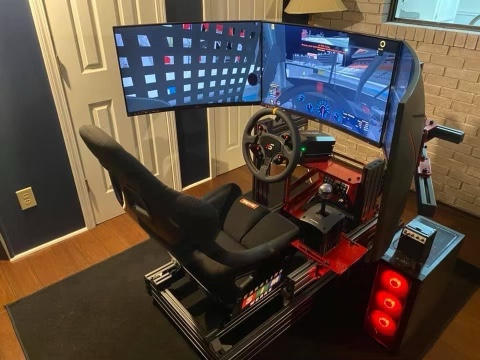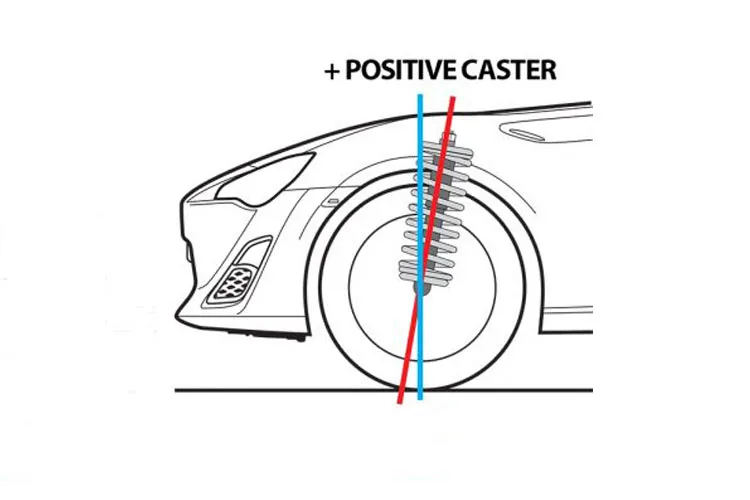How realistic is iracing? There is so much in such a short question. What does the question really mean? How do you define the realism of any kind of simulator? Like real world racing, iRacing can be expensive! In all seriousness though, there are an infinite number of metrics that you could use to judge the “realism” of iracing. I’m sure you can see it coming already, this is going to be a multi-part series that answers the above question as well as a few others.
Let’s consider the following metrics to begin to scratch the surface of this question. First up is the “feel”. Does iRacing feel real? Of course this is going to depend on your equipment, PC capabilities and things like that. Next, how “real” are the cars and tracks? I’m not just talking about looks, sound, and the location of the pit gates. I mean do the cars “act” like they would in the real world, handling characteristics, HP, acceleration, aerodynamics etc. Do the tracks have bumps where they are supposed to? Does a repaved track have more grip than one that has older pavement and is historically low grip? Finally, we will wrap this up with looking into the realism of the adjustments that you can make in the iRacing garage. There are a lot of buttons to push depending on the car trust me!
To answer the feel question, let's first talk about what “feel” means. In racecar terms, when I think about feel, I think about it as “feedback”. As a driver, you give the car an input, gas, brake, steering, all of those are inputs. Once the car receives the input, it responds. The car's response is felt by the driver, it accelerates, wheelspins, gets tight or gets loose. That response is the feedback to the input that you gave the car.
In a real car on a real track, drivers feel that feedback through the combination g-force, resistance in the steering wheel, and wheel spin or tire shake in the back/bottom of the seat. I have had the opportunity to turn laps in some top of the line simulators from one designed by a major OEM in NASCAR to some specialty built rigs for pro drivers or hard core sim racers. Some of the big simulators that are completely immersive and take up an entire room, visually are so real they make drivers flinch when they crash! Personally, I have my Logitech G27 hooked to my IKEA desk with a single 30in. flat screen monitor. What a loser right? What’s really interesting is that I can run against and beat sim racers that have rigs way more advanced than mine. How can that be? It's because I spend time understanding the “feedback” and “feel'' that I get and also what I don’t get. Does a really expensive rig with motion, g-force belts, a buttkicker, and advanced force feedback make sim racing “easier” yea sure but it also adds and ton more variables. At the end of the day, the extra “feel” that you get from a simulator is more ‘realistic” simply because of the number of “inputs” the driver gets back from the car. In the next blog we are going to discuss why that doesn’t matter and how the DriveRefine process uses iRacing to make real drivers faster regardless of their rig setup.
Now let's talk about the cars and the tracks. Anyone else love the sound of the Mercedes GT3? I could race that thing all day with the volume at 100. You know what else is fun? Trying to wrangle a Next Gen Cup around Detroit Bel Isle! Wow that place is rough! Honestly, I think the cars and especially the tracks are where iRacing really nails the “realism”. I haven’t driven every car in iRacing in real life, but I have driven a lot of them. For the most part I’d say the way the cars act is probably 75% realistic. A good part of that has to do with the physics of the sim as well as how the adjustments act when you make them. Those will be discussed later. Horsepower, grip, and aerodynamic traits, I think iRacing gets it pretty close too. You can draft, side draft, pack air, and almost any other real life trick you can think of. Tire degradation… Well, let's just say I don’t want that job and I don’t know how to make that better. But the tracks? I think they nailed it. I can’t describe how much I enjoy prepping a driver for a race at a track that is on iRacing. I don’t care if the wall is the wrong color or that they had the flag stand at Phoenix in the wrong place for like a year. What I care about is the track shape, where the bumps are, how tall are the curbs, how much run-off, and where is the pit road entry. In my experience with iRacing, all these are as they should be and that is extremely important for the DriveRefine process.
Time to close this long winded blog out with my least favorite part of iRacing. The “garage”. Let me first say, I am not bashing anyone or anything here. I can’t imagine the hours of programming, testing, and analysis that iRacing engineers had to do to turn out the product they have. It’s nothing short of impressive! What makes the garage frustrating for me is that I have to tell some drivers that I coach that you can’t “trust” what the adjustment did and take it to a real track. Sounds crazy, but I have seen drivers struggle with it and I have seen it cause a driver to anticipate a change because “that's what it did in iRacing.” Some of the struggle comes from the lack of feedback that we talked about earlier. In a real race car, you can feel a car roll over on the right front, you can feel a sway bar unload and you can feel a shock that’s overdamped. That's just not possible for most sim rigs to simulate and honestly, I don’t think the OEM rigs can do that either. The feedback coming from the OEM rigs has piles of data analytics that come with it where engineers can “see” a shock being over or underdamped. I will admit that I don’t know much about iRacing’s data analytics but it’s something I am starting to look into. Maybe it has similar capabilities. My main point is, a lot of what is done in the iRacing garage feels like a guessing game and I think a lot of drivers would agree. The good news is that through the DriveRefine process, we can use the adjustments in the garage to make drivers perform better in the real world in a number of different ways. The next blog will discuss that more as well.
I just want to say, thanks for reading all of this. I know it’s longer than usual and probably not very exciting. It will be worth your time to keep up with this blog series about iRacing because there really are so many real life tools that can be discovered and developed in the iRacing simulator regardless of how fancy or noobish your rig is. I think feel is impossible to completely simulate but how drivers respond and interpret the feedback they receive is where the magic is. The cars and especially the tracks are spot on as far as the DriveRefine process is concerned. Finally, the garage and the adjustments available to each car are infinite and it feels that way sometimes. That being said, one of the most important DriveRefine lessons can be learned and practiced using the adjustments in the iRacing garage.


